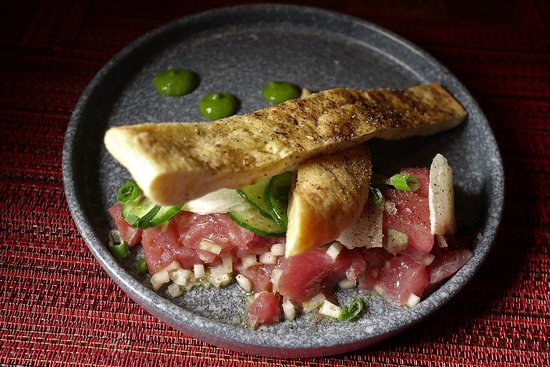Table Of Contents
Tuna is a darling of any nutritionist or foodie. It is no wonder that tuna is among the most exceptional seafood. You have to understand that tuna comes in different varieties to have as food. It is important to understand these options to make an informed decision. Tuna is available in various species although only five usually end up regularly on people’s diets.
These different tuna species have distinguished meat texture, taste, and color. The varying features of each tuna species make it more suitable for different purposes. Some tuna is ideal for salads, sushi, or steak. Keep in mind that some tuna are rarer compared to others. All these factors contribute significantly to the variation in prices of tuna varieties.

Options for tuna food
Yellowfin tuna
This pale pink tuna has a mild flavor. Yellowfin tuna is the most versatile species available. This tuna is available chilled, frozen, or pre-packed in various forms including:
- Trim
- Steak
- Loin
- Chunk
- Belly
- Tail
- Saku block
Yellowfin tuna is affordable while offering plenty of value for money. The meat from this tuna is lean with mild taste and fat. This gives a more pronounced taste compared to other species like bigeye and bluefin.
The Maldives tuna fishing industry is very sustainable while maintaining ready access to this tasty and healthy meal in the freshest form. A popular option is yellowfin tuna steak that comes vacuum-packed in pieces between 150g to 250g. You can stock enough in your freezer to last some good time without compromising its freshness. Eating tuna from the Maldives is the safest, freshest, and most sustainable way to enjoy this healthy seafood.
Bluefin tuna
This species is regarded as the “King of the Tuna” family for various reasons. Bluefin tuna has various physical attributes with a rich flavor rare in other tuna species. This tuna is usually available exclusively in sashimi form and in high-end restaurants. Here, a single piece of bluefin tuna sets you back about $20 to $200. This tuna is very popular in Japan where local restaurants are willing to pay top dollar for this seafood.
Unfortunately, bluefins are declining in stocks for their remarkable qualities. This tuna species is on the verge of extinction in some locations because of overfishing. The large number of sashimi lovers is responsible for the declining bluefin tuna. For sustainable bluefin tuna, opt for that from the Pacific instead of Atlantic and Southern bluefin.
Albacore tuna
This species takes up about 20 percent of the market for canned tuna. Also called white tuna, albacore tuna has light flesh with a very mild flavor. The tuna comes in larger chunks compared to other species like skipjack. This explains why albacore tuna is a bit pricey. Meat from this tuna species holds nicely together making it a great choice for grilling.
However, there are concerns regarding mercury levels in albacore tuna being higher compared to those in skipjack tuna. Although readily available in good numbers, you are highly recommended to take albacore tuna in limited quantities.
Skipjack tuna
Taking up about 70 percent of the canned tuna market , skipjack has a smaller size with meat having dark colors. The meat of this tuna has a tender texture to make smaller chunks for canning. Skipjack tuna has a strong fishy taste and usually labeled chunk light or light tuna on the can.
This tuna has a short life cycle and reproduce at a year old. By the time skipjack tuna is caught, there is a chance of this species having spawned about twice in their lifetime. This explains the abundance of this tuna with less worry about the foreseeable risk to stock.
Bigeye tuna
The large and stout bigeye tuna has bright firm meat with a rich flavor. This tuna species is ideal for people who enjoy fish rich in fat and flavor. Luckily, this tuna is affordable with a piece of sashimi going for about $20 at a local restaurant. It is a good bargain compared to bluefin tuna costs four times the price of bigeye tuna.
However, bigeye tuna is becoming vulnerable because of overfishing spearheaded by the huge demand resulting from its cheap price. When in the market for bigeye tuna, ensure to pick that from a sustainable source. This allows you to play a part in protecting other fish species while maintaining the availability of bigeye tuna for consumption by the future generations.
Conclusion
Tuna is packed with a range of nutrients without compromising its awesome taste. This seafood is rich in omega 3 fatty acids and protein making it a must-have on your menu. Regardless of whether you are looking forward to a sandwich on the go, a refreshing salad, sashimi, or steak, tuna is a delicious option. Now that you have understood the various tuna species, you are in a better position to select the right tuna species to include on your menu.






